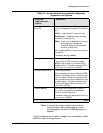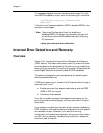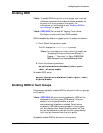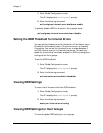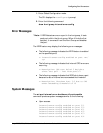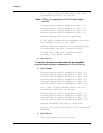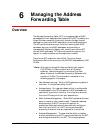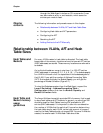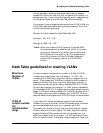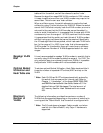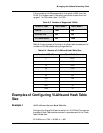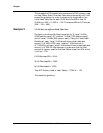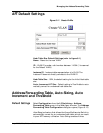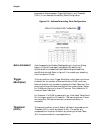
Avaya P550R, P580, P880, and P882 Multiservice Switch User Guide, Version v5.3.1 6-1
6
Managing the Address
Forwarding Table
Overview
The Address Forwarding Table (AFT) is a mapping table of MAC
addresses with their associated port locations.The AFT is used by the
Avaya Multiservice switch to correctly forward (bridge) frames
destined for a particular MAC address to the correct physical port.
The AFT performs several major functions, learning new MAC
addresses, aging out old MAC addresses, and providing a
management interface to display, add, modify, and remove AFT
entries (MAC addresses). AFT’s are maintained throughout the
system, on media modules and the supervisor module.
There is one AFT created for each VLAN. The entire Avaya
Multiservice Switch can store up to 24,000 MAC addresses and 1000
VLANs.
* Note: Although the Avaya Multiservice Switch can support
1000 VLANs, (in Fabric mode 2 with all 80 series
modules), restrictions apply for the size of the Hash
tables, the size of the Address Forwarding Tables and the
number of VLANs. This information is detailed in the
following pages in this chapter.
■ New address Learning - When a MAC address of a packet is
unknown, it must be learned by the AFT
■ Address Aging - On a periodic basis (which is configurable)
the addresses in the AFT are aged out, MAC addresses not
received for a period of time (e.g. 5 minutes) are removed
from the AFT along with their port associations.
■ Static Address Management - Static MAC address entries are
saved in memory upon module reset. These static address
always exists in the AFT, and are not aged out or
overwritten.Static entries are those manually configured.
Each VLAN and its AFT has 18 AFT entries automatically
entered by the switch that are reserved for internal use
.
■ Address Management - The user has the ability to display
entries, add entries to the AFT, remove entries from the AFT,
and change entries within the AFT. This is accomplished



